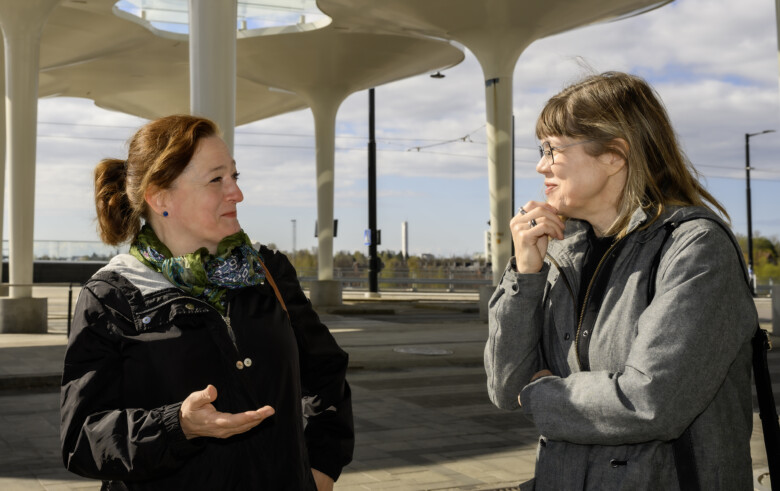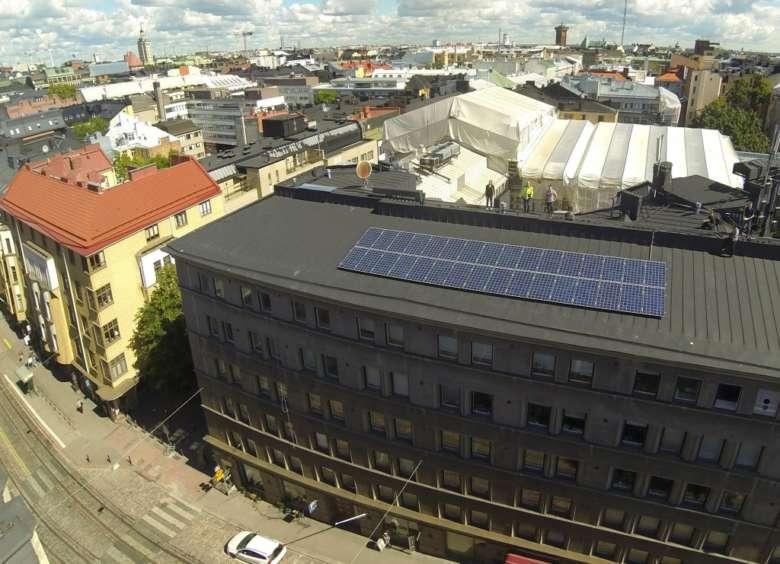Cases

Citizens' city
The time for waiting is over, cities must be designed sustainably
Published:
Nomaji Landscape Architects, a design firm with a focus on sustainability, started its work less than a decade ago. Landscape Architect partner and CEO Anni Järvitalo says that during these years, designing has taken a huge leap forward in terms of taking ecological and social aspects into account.
— We still have to justify our views, but the work has become easier. The change is reflected in the discussions and cooperation with the different actors, which is really gratifying.
Ms Järvitalo continues that some companies are now very keen to promote a more ecological approach. They seem to have a genuine desire to do things in a new way.
In contrast, there is still a lot of work to be done in land use planning.
Award for innovative and sustainable design
Nomaji was awarded the 2023 State Prize for Architecture for the firm’s work in high quality landscape architecture, regenerative design and overall sustainability.
The award justification also highlighted how Nomaji’s designs create solutions to growing environmental crises — urban flooding, nature cover, the heat island effect and rising social inequality.
— Actors like Nomaji are needed to create hope for society, architecture and landscape architecture, and to solve the major environmental problems created by the design industry over the last 100 years, the award justification sums up.
The Arts Promotion Centre Finland (Taike) which awarded the prize, mentions few examples of the agency’s inspiring designs in Helsinki-Uusimaa Region, such as Kaapelipuisto in Ruoholahti, Sipoonlahti schoolyard and Keilaniemi coastal development area.
Urgent need to change the way we do things
Ms Järvitalo points out that although human activities have ruined nature and driven species to extinction, some of the mistakes can still be mitigated and the scale of the losses can be influenced. Take the example of cities, which are constantly being regenerated.
— It is possible to use nature-based solutions for regeneration, while taking into account, for example, how our environment can adapt to future changes.
She believes that now is the time to act.
We cannot afford to remain silent any longer and wait for things to improve.
— We cannot afford to remain silent any longer and wait for things to improve. We need to change mindsets and ways of doing things quickly so that future generations can have the conditions for a good life.
She has noticed that the pressing need for change is clear to many companies. However, it seems that the rest of the society has a mixed understanding of the urgency of the matter.
Ms Järvitalo is concerned about the trend towards densification in the metropolitan area, although she understands the factors driving it.
— The more densely we build up land, the harder it will be to tackle the effects of climate change and maintain biodiversity.

She stresses that the metropolitan area cannot leave the task of maintaining natural diversity to Eastern Finland, for example.
— Natural diversity is different here and elsewhere in Finland. We in southern Finland have a responsibility to look after our own species.
Child-friendliness benefits everyone
Ms Järvitalo prefers to start a new design by thinking about the factors that make an environment welcoming and accessible to all. She wants to pay particular attention to green and blue structures.
In Nomaji’s design, she wants to extend the greenery from the courtyards to the natural areas. The habitat of the landscaping must be of high quality not only for people but also for other species.
The blue network includes not only water bodies but also the management of stormwater and meltwater in the built environment. Nomaji’s landscape architects emphasise how the urban relationship with the water environment is constantly changing and needs to be addressed.
Ms Järvitalo presents a design method called Alku (beginning) developed by Nomaji. It is based on three design principles: enabling contact with nature, supporting spontaneous movement and providing learning opportunities throughout the urban environment.
The emphasis is on child-friendliness: a child-friendly city is diverse, interesting, safe and healthy for all.
— Urban planning should be able to look at the whole human spectrum. A child-friendly environment provides opportunities for learning and new experiences for all, says Ms Järvitalo.
When planning and implementation provide opportunities for contact with nature, they also provide for the future.
Good examples can already be found
In Ms Järvitalo’s view, the ideal would be for people not to have to travel far from their homes on a daily basis. At best, there would be village clusters with basic services within cities. People would be able to relax in the nearby countryside.
The cities of Helsinki and Espoo have introduced a green factor in their urban planning to ensure that sufficient green space is retained on plots. At the same time, the green factor helps prevent stormwater flooding and increase biodiversity. The green factor describes the amount of vegetation and water retention solutions on a plot in relation to the plot area.
— The green factor provides new solutions and more greenery than usual,” says Järvitalo.
Among Nomaji’s own work, Ms Järvitalo mentions Kaapelipuisto and Kaapeliaukio in Helsinki, where the agency designed a very diverse vegetation. In addition, a green roof supporting biodiversity was created on the roof of the Dance House Helsinki located in the square.
In the courtyard of the Scandic Grand Central hotel, located next to the Helsinki railway station, Nomaji has designed a green oasis in the middle of the stone quarters. Interesting urban development projects currently in the planning stage include Ilmala media campus and the Valimo station area in Helsinki as well as the Tikkurila Väritehdas area in Vantaa and Keilaniemi in Espoo.

As cities become denser and the population of growth centres increases, their recreational areas will come under increasing pressure.
— For such areas, structural solutions are needed to safeguard nature.
Ms Järvitalo reminds that equality is an essential part of sustainability. Smart solutions will ensure that both children in strollers and elderly people with fumbling steps have access to local nature.
There are good examples of this too. Järvitalo mentions the nature trail structures in Lammassaari island in Helsinki, and nature conservation has also been taken into account in the design of the Vasikkasaari and Kallahdenniemi trails.
Ms Järvitalo believes that those who take sustainability seriously will be the winners of the future.
In fact, there is no other choice.










 Return to listing
Return to listing